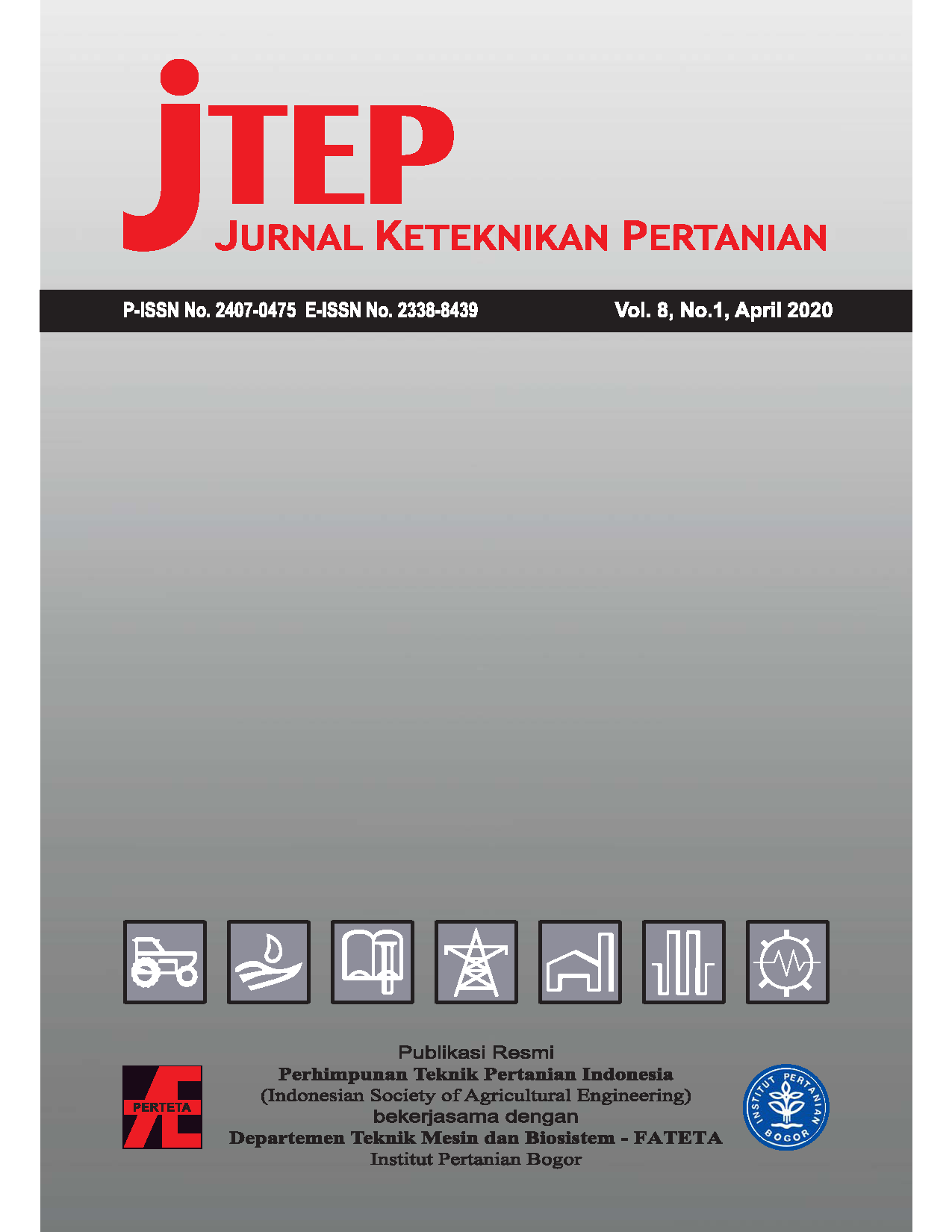Main Article Content
Abstract
Milled rice is one of the most important agricultural commodities for Indonesian people as staple food. Consumers tend to not know how to differentiate good or low quality of rice. Rice mill (RMU) in Bogor Regency mostly do not have quality standard comply with Indonesian National Standard (SNI). The purpose of this study was to identify the quality of rice and milled rice produced by RMU in Bogor Regency and evaluate the suitability of the application of rice and milled rice handling in RMU to Good Handling Practices (GHP) and Good Manufacturing Practices (GMP). The parameters measured were analysis of rice and milled rice quality and data analysis. The data resulted from measuring the quality of grain and rice was obtained from interview and observation. The results showed that four RMU rice samples not included in the class category SNI 6128: 2015 and two samples included in Medium III (M-3). On the postharvest handling conformity level was 44.92 percent for GHP and 60.25 percent for GMP. GHP and GMP guidelines were not yet fully applied by rice milling unit (RMU).
Article Details

This work is licensed under a Creative Commons Attribution 4.0 International License.
Authors submitting manuscripts should understand and agree that copyright of manuscripts of the article shall be assigned/transferred to Jurnal Keteknikan Pertanian. This work is licensed under a Creative Commons Attribution-ShareAlike 4.0 International License (CC BY-SA) where Authors and Readers can copy and redistribute the material in any medium or format, as well as remix, transform, and build upon the material for any purpose, but they must give appropriate credit (cite to the article or content), provide a link to the license, and indicate if changes were made. If you remix, transform, or build upon the material, you must distribute your contributions under the same license as the original.
References
- A.A Nurcahyani, R. Saptono. 2015. Identifikasi Kualitas Beras dengan Citra Digital. Scientific Journal of Informatics. 2(1):63-72.
- A.R Fauziah, Noortasiah, T. Nor. 2001. Cara Pengujian Mutu Fisik Gabah dan Beras. Temu Teknis Fungsional Non Peneliti. Hlm 184-191
- AOAC. 1990. Moisture Content Determination. Official Methods of Analysis of the Association of Official Analytical Chemist.Association of Official Analytical Chemist. Washingthon. USA.
- Badan Standardisasi Nasional Indonesia. 1987. Standar Mutu Gabah. SNI 01-0224-1987. Jakarta
- Badan Standardisasi Nasional. 2015. Standar Nasional Indonesia Beras. SNI 6128 : 2015. Jakarta
- E. Christianto. 2013. Faktor yang Mempengaruhi Volume Impor Beras di Indonesia. Jurnal JlBEKA. 7(2):38-43.
- P. Wibowo, D.I Indrasari, D.D Handoko. 2007. Preferensi Konsumen Terhadap Karakteristik Beras dan Kesesuaiannya Dengan Standar Mutu Beras di Jawa Tengah. Laporan penelitian. Balai Besar Penelitian Tanaman Padi. Sukamandi
- R. Hasbullah, A.R Dewi. 2012. Teknik Penanganan Pascapanen Padi untuk Menekan Susut dan Meningkatkan Rendemen Giling. Artikel Pangan. 21 (1): 17-28.
- R. Rachmat, R. Thahir, M. Gummert. 2006. The empirical relationship between price and quality of rice at market level in West Java. Indonesian Journal of Agricultural Science 7(1):27-33.
- R.D Ningsih dan K. Nafisah. 2014. Preferensi Konsumen Kalimantan Selatan Terhadap Beras dan Rasa Nasi Varietas Unggul. Prosiding Seminar Nasional “Inovasi Teknologi Pertanian Spesifik Lokasi”, 2014 agus 6-7. Banjarbari (ID). hlm 265.
- Z.H Hassan. 2014. Kajian rendemen dan mutu giling beras di kabupaten Kotabaru provinsi Kalimantan Selatan. PANGAN. 23(3): 232-243.
